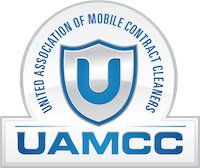Winterization helps prevent potential damage caused by freezing temperature. It ensures your equipment remains in top condition. Watch Ron Musgraves discuss Winterizing Pressure Washing Units Tips on his Youtube Channel!
As the temperatures drop and winter approaches, safeguarding your pressure washer becomes crucial to ensure its optimal performance come spring. Properly winterizing your pressure washer is a proactive measure that ensures longevity and reliability. When you are performing routine maintenance, you'll be well-prepared to unleash its full power when spring arrives. Don't let winter take a toll on your equipment. These steps to safeguard your pressure washer becomes a seamless process. Now your ensured it's ready to tackle cleaning tasks effectively when the warmer seasons return.
3. 55 Below Window Wiper Fluid
Involves preparing a specialized fluid mixture capable of withstanding extremely low temperatures (as low as -55°F/-48°C). This type of fluid is made with a higher concentration of isopropyl alcohol and distilled water. Designed to prevent freezing within the pressure washer system.
6. Protecting Your Pressure Washer with Heating Blankets and Light Bulbs
By employing heating blankets and a light bulb strategically, you can create a warmer environment around your pressure washer, preventing freezing and potential damage during harsh winter conditions.
7. Store Properly
As the temperatures drop and winter approaches, safeguarding your pressure washer becomes crucial to ensure its optimal performance come spring. Properly winterizing your pressure washer is a proactive measure that ensures longevity and reliability. When you are performing routine maintenance, you'll be well-prepared to unleash its full power when spring arrives. Don't let winter take a toll on your equipment. These steps to safeguard your pressure washer becomes a seamless process. Now your ensured it's ready to tackle cleaning tasks effectively when the warmer seasons return.
Why Winterize Your Pressure Washer?
Winter poses several risks to pressure washers, primarily due to water freezing within the system. Frozen water can expand, leading to cracked pumps, hoses, and other components. Proper winterization safeguards against these issues, extending the lifespan of your equipment.Tips for Winter Maintenance:
- Battery Care: If your pressure washer has a battery, remove it and store it in a dry, cool place to preserve its lifespan.
- Hose and Wand Storage: Coil and store hoses and wands indoors to prevent them from freezing, cracking, or becoming brittle.
Steps to Winterize Your Pressure Washer:
1. Thoroughly Clean the Equipment
Begin by cleaning the pressure washer thoroughly. Blow the system out completely with an air hose. Remove any dirt, grime, or debris from the machine to prevent clogs or corrosion during the winter months.2. Flush Out Residual Water
Disconnect the water supply and turn on the pressure washer to allow it to run until all water is expelled from the system. This step ensures there's no water left in the pump or hoses that could freeze and cause damage.3. 55 Below Window Wiper Fluid
Involves preparing a specialized fluid mixture capable of withstanding extremely low temperatures (as low as -55°F/-48°C). This type of fluid is made with a higher concentration of isopropyl alcohol and distilled water. Designed to prevent freezing within the pressure washer system.
4. Antifreeze Solution
Utilize an appropriate antifreeze solution designed for pressure washers. Run the solution through the system to displace any remaining water. Ensure the solution reaches all parts susceptible to freezing.5. Protect the Pump
Coat the pump with a lubricant or pump saver solution to safeguard it against corrosion and freezing. Follow the manufacturer's instructions for the correct application.
6. Protecting Your Pressure Washer with Heating Blankets and Light Bulbs
By employing heating blankets and a light bulb strategically, you can create a warmer environment around your pressure washer, preventing freezing and potential damage during harsh winter conditions.
7. Store Properly
Store the pressure washer in a dry, protected area away from extreme temperatures. Cover it with a breathable cloth or tarp to shield it from dust while allowing airflow. Store the equipment and trailer units in an enclosed area. Keep the trailer and unit to a certain temperature so it doesn't Freeze
8. Regular Maintenance Checks
Periodically check your pressure washer during the winter months. Inspect for any signs of damage, and if necessary, perform maintenance to prevent issues from escalating.
Join the Ultimate Pressure Washing Community!
Click Here 'PRESSURE WASHING FRIENDS'
Your Go-To Hub for Expert Tips & Support!
Click Here 'PRESSURE WASHING FRIENDS'
Your Go-To Hub for Expert Tips & Support!
Last edited:
